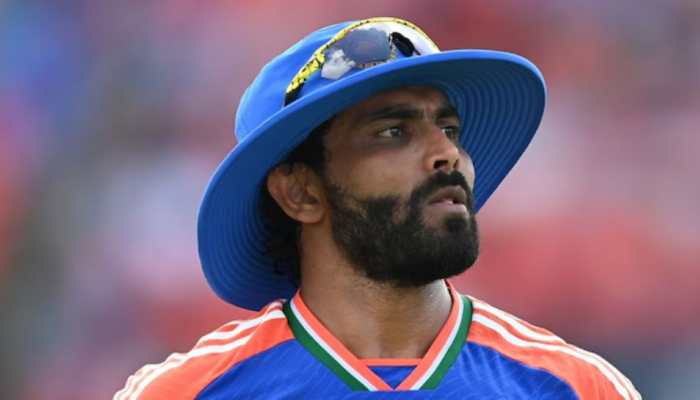Opinion: Re-evaluating hate speech laws in India
Hate speech can have disastrous effects. While freedom of speech and expression is a fundamental right in democratic India, over-appropriation of fundamental rights and freedoms can also create a state of anarchy and panic in society.
- In India, there is no legislation yet that defines Hate speech in a crystal-clear manner
- ‘Incitement’ is the key factor in determining the constitutionality of a restriction on free speech
- Hate speech sometimes may take the form of sedition when done against the state, but vice versa is not possible
Trending Photos
) File Photo
File Photo By Satya Muley
New Delhi: Being Citizens of Democratic India, we get liberties in the form of fundamental rights. These rights help us live peacefully to our fullest potential without artificial hindrances and unjustified restrictions. But over-appropriation of fundamental rights and freedoms create a state of anarchy and panic in society.
Under Article 19 (1)(a)(1) of the Constitution of India, all citizens are guaranteed the right to freedom of speech and expression, but when wrongly exploited, it can take the form of 'hate speech' which can have disastrous effects. Therefore, the Right to freedom of speech and expression has reasonable restrictions on the grounds of safeguarding the sovereignty and integrity of India, the security of the State, etc. In the era of the internet and social media, the impact of mass communication gets highly amplified in a short span of time. And in certain cases, by the time law enforcement agencies come into action, these speeches or texts create a commotion and affect a large number of people. In the backdrop of recent incidents surrounding Nupur Sharma and Mohammed Zubair and the uproar they created in India, there is a need to take a look at the nuances of this term and its use or rather misuse.
What is Hate Speech?
Hate speech is not new in India. Apparently, in 1990 some mosques in Kashmir broadcasted inflammatory speeches to whip up hate against Hindus, triggering their exodus from the Muslim-majority Kashmir Valley. In the same year, BJP leader LK Advani spearheaded a movement to construct the Ram temple at Ayodhya - leading to uncontrolled mobs razing the Babri mosque which in turn sparked deadly communal riots.
In India, there is no legislation yet that defines Hate speech in a crystal-clear manner. However, in the matter of Shreya Singhal v. Union of India, the Hon’ble Supreme Court had differentiated between three forms of speech i.e., discussion, advocacy, and incitement. It was held that a speech can only be limited on grounds of exceptions mentioned in article 19(2) when it reaches the threshold of incitement. All other forms of speech, even if offensive or unpopular, must be protected under article 19(1)(a). Thus, ‘Incitement’ is the key factor in determining the constitutionality of restriction on free speech.
Difference between Hate speech and Sedition
The difference between Hate Speech and Sedition is that hate speech affects the State indirectly by disturbing public tranquillity, while sedition is an offence directly against the State. Hate speech sometimes may take the form of sedition when done against the state, but vice versa is not possible.
Laws dealing with Hate Speech in India
The Indian Penal Code, 1860
Indian Penal Code (IPC) has been found to be lacking when it comes to modern-day crimes. However, IPC is very effective in dealing with the traditional forms of offences. Thus, IPC has provisions such as Sections 153 A and B, 295 A, 298, 505 which define the promotion of enmity between different groups on grounds of religion, race, place of birth, residence, language etc., and doing acts prejudicial to maintenance of harmony, imputations, assertions prejudicial to national integration.
These provisions also deal with offences such as uttering, words, etc, with deliberate intent to hurt the religious feelings of any person, publication or circulation of any statement, rumour or report causing public mischief and enmity, hatred or ill-will between classes of people. The punishment for such offences ranges from a mere monetary fine and may extend up to 3 years of imprisonment.
The Representation of The People Act, 1951
Although there are certain provisions to restrict hate speech in the political sphere, we see Indian politicians rampantly making statements which flare up public emotions and lead to hatred among people of various classes. In April 2022, an MLA during Ram Navami yatra, sang a song with lyrics that said anyone who didn't chant Hindu deity Ram's name would be forced to leave India, and this led to an F.I.R to be filed against him.
Other Laws
There are various other enactments in place which allow the relevant authorities to regulate, control and censor the content or communication to prohibit hate speech, hate narrative or content which spreads hatred. Laws such as The Protection of Civil Rights Act, 1955 prohibit hate speech promoting untouchability. The Religious Institutions (Prevention of Misuse) Act, 1988, The Cable Television Network Regulation Act, 1995, The Cinematograph Act, 1952, and The Code of Criminal Procedure, 1973 are other examples of laws which deal with the offence of hate speech and prescribe various punishments.
Impact of social media on Hate Speech
In today’s era of information technology, even school-going kids have access to smartphones and the internet. As news spread like wildfire, the reaction of people on several occasions comes faster than the law enforcement agencies can act.
Many a time radical elements are often seen making use of social media to broadcast their hate narratives. These elements are many a time based abroad or are even using a fake identity, thereby giving a temporary anonymous character to the promoter of hate speech. Such tendencies are on an alarming rise in recent years.
Use and Misuse of the Laws related to Hate Speech.
Due to lenient punishments prescribed in the laws, many political figures and radical elements have engaged in calculated acts of hate speech. ‘Le Ke Rahenge Azadi’ slogans by student leader Kanhaiya Kumar in JNU, which became a reason for protests and national furore, is a classic example of the use or even misuse - both of what is allowed and what is prohibited under the freedom of speech and expression.
On the other hand, May 2022 is an example of certain comments by the then BJP Spokesperson about Prophet Muhammad, which attracted criticism from several quarters and enraged some Muslim radicals, leading to a couple of innocent persons being killed. Thus, what is that fine line that separates what can be legitimately spoken and expressed and what is prohibited, is the big question.
Need for reformation of laws regulating Hate Speech
The existence of several laws essentially creates a tangled web of legal provisions dealing with one or the other form of hate speech which makes it nearly impossible to comprehend exactly what kind of speech is hate speech, that is banned within the Indian jurisdiction.
Although reasonable restrictions can be imposed on freedom of speech and expression, over-criminalization of speech is also dangerous. The Nupur Sharma case and several other examples demonstrate that the same or similar statement made by an individual is many times termed as insulting, hateful, and F.I.R are being filed at numerous locations by a particular set of people. This has raised questions as to whether the level of freedom of speech and expression available to one set of people is lesser than other sets of people in India?
In Pravasi Bhalai Sangathan v. Union of India during the year 1997, the Supreme Court dealt with an interesting case where the petitioners prayed that the State should take peremptory action against makers of hate speech. The Court observed that the implementation of existing laws would solve the problem of hate speech to a great extent. The matter was referred to the Law Commission to examine if it ‘deems proper to define hate speech and make recommendations to the Parliament to strengthen the Election Commission to curb the menace of “hate speeches” irrespective of, whenever made.’
No doubt the clumsily worded provisions in existing laws contribute to the confusion. There is an urgent need for well-defined legislation on hate speech which will not only define the crime and prescribe the punishments but will also disallow the misuse of laws related to hate speech to frame innocent people to promote mala fide agendas.
(Disclaimer: Satya Muley is an advocate with the Bombay High Court. The views expressed in this article are those of the author and do not reflect the views of Zee News)
Stay informed on all the latest news, real-time breaking news updates, and follow all the important headlines in india news and world News on Zee News.
Live Tv







)
)
)
)
)
)
)
)
)
)
